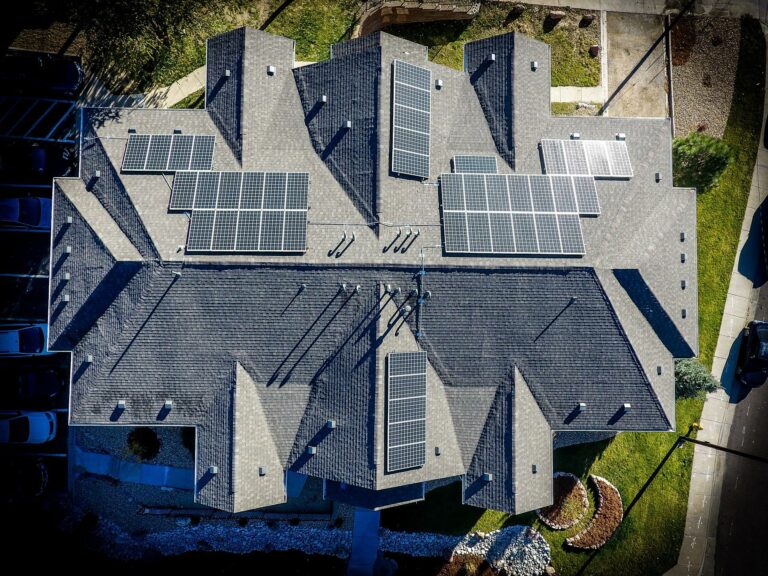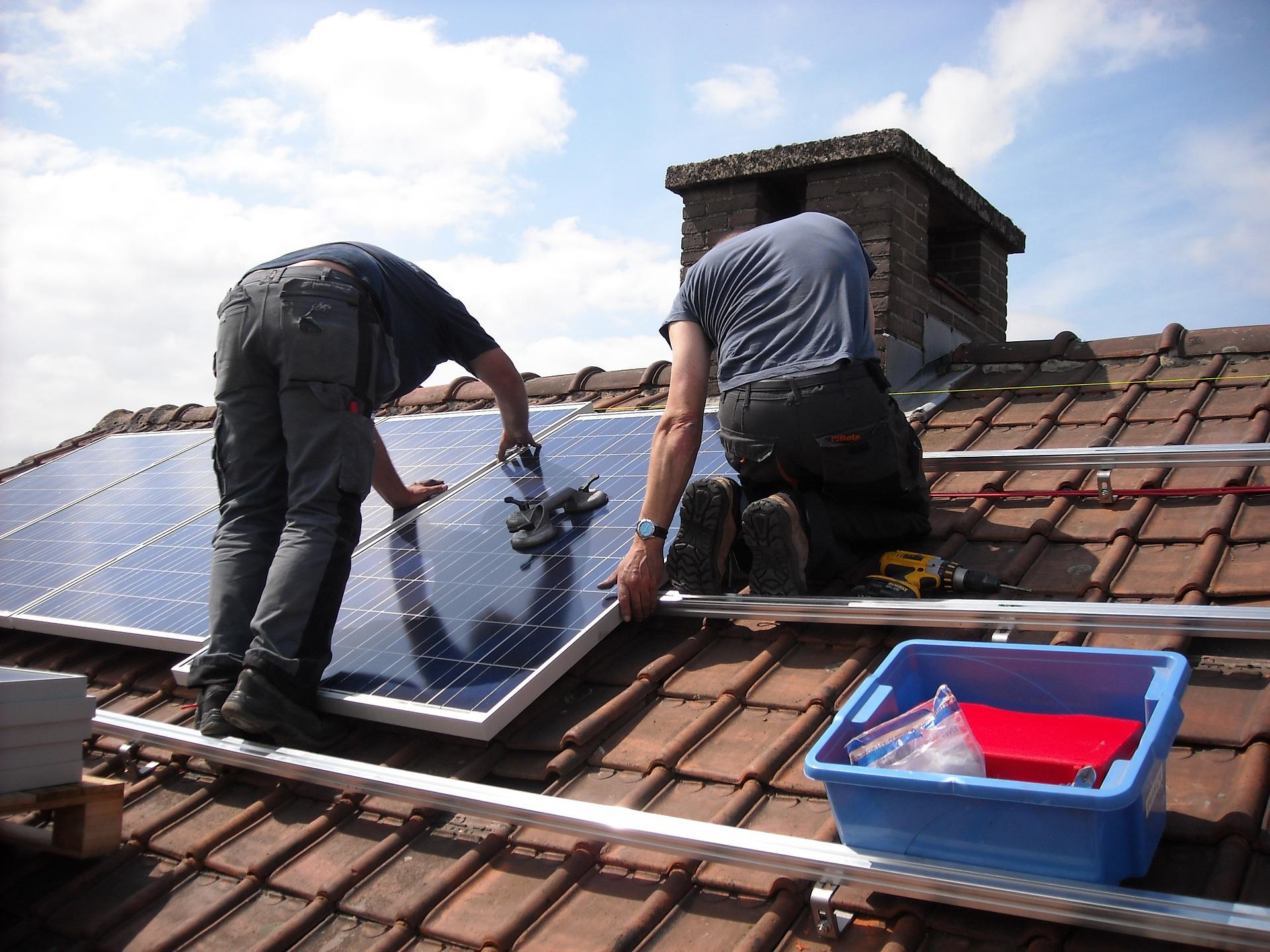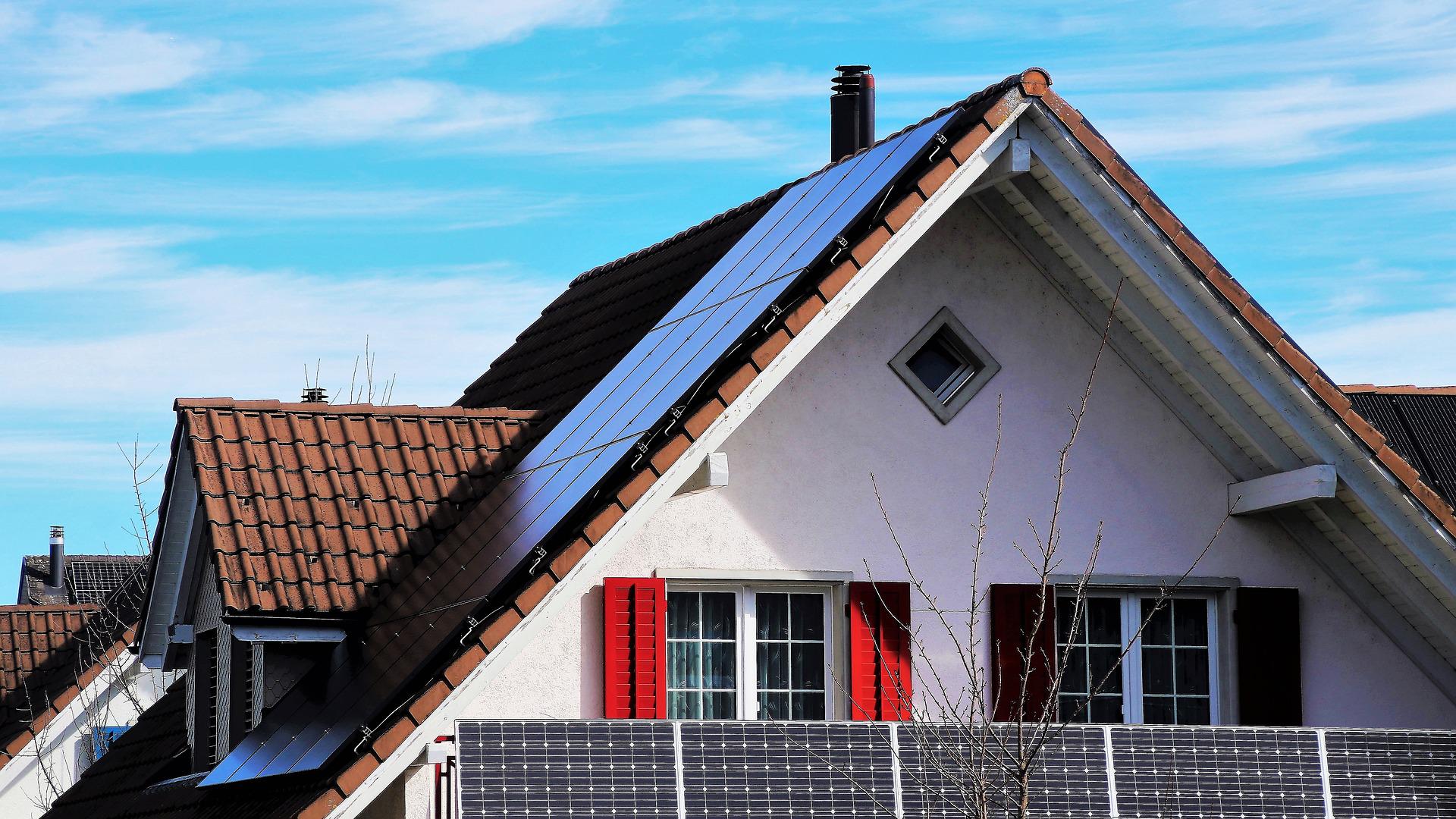
How much should a kilowatt-hour of electricity cost? This seemingly simple question, hiding a multitude of complexities, has confounded the electrical utility industry for decades. Should everyone pay the same rate or should some people pay more than others? Should electricity cost the same at all times and in all places or should these vary by demand? Should people who can afford it pay more? Should rates be set to encourage other desirable goals such as increasing electricity generation through sources that don’t produce carbon dioxide?
Questions like these gained another layer of complexity when residential rooftop solar generation became widespread and affordable. They became highly visible in California, where the state’s policy of encouraging renewable energy has been highly successful. One problem, however, is that success has been felt unevenly; some say the rich have benefited more than the poor. Recently the California Public Utility Commission has proposed a drastic revision of solar rates in hopes of spreading costs more equitably. The California case involves a mixture of engineering, infrastructure, regulatory law, finance, economics and political conflict. It is worth studying by anyone who cares about the environment, about clean energy, or about social equity, not least because many other states are facing similar issues and will need to find their own ways of solving them.
For a better understanding of energy pricing in California, Tony Van Witsen of ESAL spoke to Mohit Chhabra, the senior scientist for climate and clean energy with the Natural Resources Defense Council. His remarks have been lightly edited for length and clarity.
On how electrical rates are set in California:
MC: In California, utilities are decoupled. Their earnings don't depend on how much electricity they sell. This was done a number of years ago to discourage utilities from just solely focusing on selling more electricity, so we can provide the right signals to balance electricity use and conservation.
What this implies is that utilities are prohibited from earning any profit on purchasing electricity. Any contracts that are signed with third party generators are passed through to customers at cost. Moreover utilities aren't allowed to own any new generation assets save a few of the ones they already had when this law was put into place.
The way electric rates are then set is through legal proceedings overseen by the Commission called general rate cases. Through those, the utilities propose all of their spending and they're guaranteed a certain rate of return when they build stuff.
The guaranteed rate of return they get includes the profit they're legally allowed to make plus any debt that they have to incur. So if they borrow money at a 5% rate they'll account for that in the rate of return, and they're allowed to get from California customers.
That's how utilities make money – by requesting permission to build necessary infrastructure, getting approval based on showing of need, and then recuperating their investment to build with a guaranteed rate of return.
Once it's decided that the utility, like Southern California Edison or Pacific Gas and Electric, can recover, say, a billion dollars, then they forecast how much their customers will consume and then they back out what a rate would be. Say, they’re allowed to collect some money, like a billion dollars. They forecast that people would consume 10 billion kilowatt hours. And then the rate becomes 1 billion divided by 10 billion. So that's 10 cents. The rates are determined based on forecasted sales and revenue requirements.

Installation of a rooftop solar system. Photo credit: Maria Godfrida
Retail rates can reflect many different costs that a utility can incur. These include the costs of electricity purchased at wholesale, costs of building new transmission and distribution lines, maintenance costs and also some costs mandated by the CPUC for programs that address climate change or protect against wildfires. Many of these policies are similar to those in other parts of the United States. What sets California apart is its massive and highly successful commitment to renewable energy, particularly solar. In the 1990s, the state had almost no solar power. Today California has approximately 1.2 million solar installations, providing nine gigawatts of capacity, about 11 per cent of the state’s total electrical production capacity. About half of that comes from rooftop solar, with the other half from industrial-scale solar farms.
One key policy used by many states to encourage this growth is called net energy metering—NEM for short. Under NEM, people who install solar can use it to power their own home or business without taking any power from the grid. At night, when there’s no solar production, they can buy power from the grid at retail rates. But—and here’s the key—during the day if homeowners' solar cells produce more power than they need, they can get credit on their bill for that extra power. It's as if their meter runs forward when they're buying power from the grid and backward when they're not buying. The gain and loss are totaled and the net amount is what they pay, which is why it’s called Net Energy Metering.
At present, people can sell solar power back to the grid at retail price--the same rate they pay for power when they consume it from the grid. In California, those are some of the highest in the country. Under NEM, the NRDC estimates most solar customers in California can pay as little as 10 to 20 dollars a month for electricity, compared to earlier bills of 200 dollars or more.
TVW: When you talk about how a disproportionate share of the cost falls on those who can least afford it, how does that work? The rates are fixed. So in what sense are they paying more than they should?
MC: In two ways. When you figure out how much money utilities are supposed to collect, part of that slice is what are electricity contracts that the utilities sign, which they aren't allowed to earn a profit on.
So if a big portion of the electric contracts or electricity that you're buying is from net metering, which is valued at five to six to seven times more than what it really should be, that means that customers are paying more. Because the alternative is you would pay three to four cents to buy that same clean electricity, but now you're paying 30 cents.
In San Diego, for example, around 15% of the residential load is connected to roof solar. That's when problems arise, because when you start paying rooftop solar owners at full retail rate. But the full retail rate is, depending on the time of day, between three to five to seven times the wholesale value of the electricity the solar panel produces. You're paying somebody way more than the value they're providing. And because in California utilities can't make a profit on generation, all of these costs are straight on pass-through to people who don't have solar.
You can think of it as, if I agree to pay you 30 cents a kilowatt-hour, then that's just passing through to someone else, that cost. If you could be buying the same solar electricity at three cents a kilowatt-hour instead of buying it at 30 then that falls on the backs of people who don't have solar, who tend to be a lot less wealthy.
In December 2021, the California Public Utilities Commission (CPUC) proposed to revise NEM to reduce the credit customers earn for electricity they sell back to the grid. If it’s adopted, solar users would be required to pay their electricity provider (regardless of whether the provider generates power or aggregates it from others and retails it to consumers) 8 dollars per kilowatt of installed solar capacity. The intent is to charge solar users their share of costs to maintain the grid and fund public purpose programs.
The plan, called NEM 3.0, was immediately criticized by representatives of the solar power industry. For example the California Solar And Storage Association (CALSSA) disputes the argument that people without solar are, in effect, subsidizing people with solar. In CALSSA’s view, rooftop solar saves money for everyone by reducing the need for utilities to build more transmission lines and other expensive infrastructure.
Subsequent to this debate, in February 2022 CPUC decided to put its proposal on hold indefinitely.
However the underlying economics remain, and are just as complicated under the original policy. Grid infrastructure can include physical infrastructure required by the CPUC such as power plants, long-distance transmission lines and local distribution lines that serve individual neighborhoods. But different parties may have different views of which costs are necessary. For example, some jurisdictions may be required to pay for pollution control or vegetation cleanup to prevent wildfires. There is often dispute about which costs are necessary and therefore are avoided by rooftop solar.

Solar panels collecting solar energy. Photo credit: Ulrike Leone
MC: This is where a lot of these arguments are made, about how much the utility is short. One reason why utilities--this is my opinion now--dislike rooftop solar, and they argue so much against it is: how much rate increases are utilities feasibly allowed to levy?
Generally people may want to make sure that electric rates track inflation and consumer price index. Now if the pressure on rates is coming from rooftop solar, that means the utility won't be able to build other things that people may need, or to maximize their profits.
There's some mix of those two things. So, rooftop solar-related rate hikes dampen their ability to build things for better or for worse, because if there's a lot of rate pressure from rooftop solar, that means politically it's really hard for them to justify these investments which would then cause further increase in rates.
TVW: If they have a guaranteed rate of return and they can't actually charge for the electricity that they're buying, isn't that an incentive for them to overinvest in infrastructure, for example?
MC: Yeah, that is, and that's what we need to push back on as a community. But at the same time, there might be some infrastructure that's necessary to invest on. So there's the balance between, they'll definitely want to do everything that's appropriate and then they have an incentive to overinvest.
The question of investment vs overinvestment is determined by the CPUC, which uses a calculator called “avoided costs.” These can include such things as the cost of electric generators unbuilt or power unpurchased, transmission and distribution lines no longer considered necessary or pollution that was never created and therefore doesn’t need mitigation. However, as Chhabra explained, the details are far more complex:
TVW: I'm aware that the public utilities commission has an avoided cost calculator, but what goes into that? How has that methodology been determined?
MC: It starts with the wholesale value of electricity. That's pretty straightforward. You have some data on it, then they build upon that. How much will saving electricity in each hour defer investments in transmission and distribution? They do that by looking at utility expenditure in the past few years and to try to determine how it's correlated with change in electric demand and consumption. I'm oversimplifying it a little bit to explain, but you can imagine if you look at the utility and they spent a million dollars to account for a thousand kilowatt increase in demand, that gives you some idea as to what each kilowatt increase in demand does in terms of triggering transmission investments.
So they worked through utility filings in past years, approvals of their filings to figure out how much transmission and distribution upgrades do you really defer. And then you're allocated amongst places and hours.
Other avoided costs, such as valuation of carbon, are then added to this value stack.
One thing about distribution and transmission investments is they are caused by peak demand. So you have to have enough capacity in the poles and wires to deliver the most amount of electrons that will be needed at any single point in the year.
TVW: That’s to meet peak demand, right?
MC: Exactly. So they account for that in the avoided cost calculator. One of the issues with distributed solar is it doesn't defer peak demand anymore. Our peak demand used to be in the summer afternoon and now, thanks to solar, our peak demand is the summer evenings. Deferrals in transmission and distribution are location dependent. To truly defer a wire, you need to make sure that the place the wires are coming from and going to have their electricity needs adequately met.
So you need to account for all of that. The avoided cost calculator values saving a unit of electricity are lowest in the middle of the afternoon, when there's most solar on the grid, because part of what the avoided cost calculator accounts for is also the carbon emissions and the environmental value of those emissions.
It's highest in the evening. So it's around three cents, a kilowatt hour in the afternoons. And certain evening times it goes up to 25 cents 22 to 25 cents an hour. That's just a signal to customers, vendors of distributed generation and utilities, that this is how much saving electricity at source on the grid is in different hours of the year.

Solar panels along entire side of rooftop. Photo credit: Pasja1000
TVW: Is there a generally agreed upon methodology to decide on what's an appropriate amount of investment or is that always negotiable to some extent?
MC: To some extent that's negotiable. That's where utilities’ dislike of reasons that pressure rates that are beyond their own actions comes up. If you force rate increases because of social investments or because of rooftop solar, that means they'll not be able to justify other investments. So there's a little give and take there.
CPUC’S proposal also includes a credit, called a Market Transition Credit. In essence it’s a single, one-time payment to compensate solar users for their losses as they convert to new solar rates. The exact amount remains to be decided. The Natural Resources Defense Council thinks the payment should be high enough so that solar users can recover the cost of their solar panels in about a decade.
MC: The market transition credit would be a one-time payment. So almost like a rebate on your purchase.
For something that lasts 25 to 30 years, it was our best estimate that having a ten-year payback keeps a viable product on the market while minimizing negative rate impacts.
Then for lower income customers, we said, let's not charge them any grid charge – the scalable charge I talked about. That's an extra benefit they get – extra discount on electricity. And, separately, let's come up with a fund to help people buy down the first cost of clean energy technology, which is the real barrier that a lot of customers face. And that was, in the nutshell, the framework of our proposal.
The NRDC’s entire proposal for NEM 3.0 is close to that proposed by the CPUC itself. In addition to the new NEM rate and the market transition, NRDC wants a new fund to provide clean energy benefits to Californians with lower incomes. A final decision by the Commission isn’t due until later this year.
For more information about the California Public Utility Commission's Plans: https://www.cpuc.ca.gov/news-and-updates/all-news/cpuc-proposal-aims-to-modernize-state-decarbonization-incentive-efforts
For more about the Natural Resources Defense Council’s views:
https://www.nrdc.org/experts/mohit-chhabra/debunking-myths-surrounding-californias-net-metering-reform
For more about the California Solar And Storage Association’s views:
https://calssa.org/press-releases/2021/12/13/save-california-solar-coalition-statement-on-cpuc-net-metering-proposed-decision